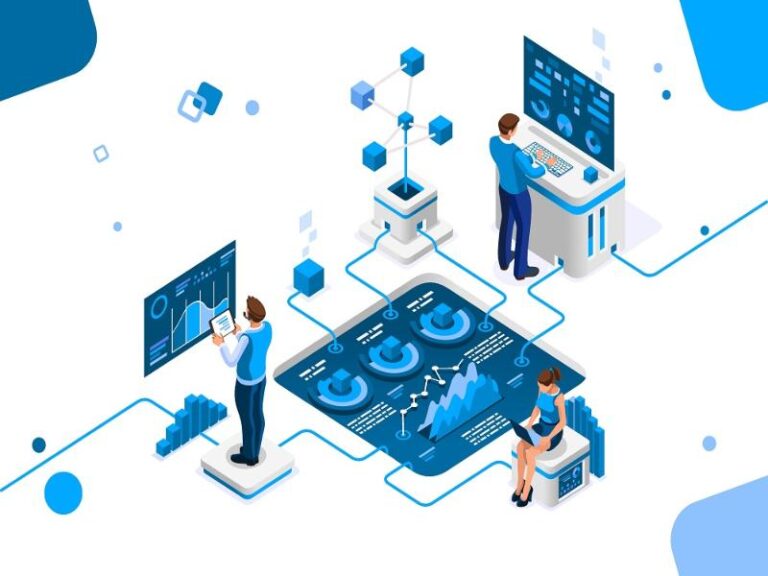15 Benefits of Data Visualization
In our fast-paced world, understanding and making decisions based on heaps of information can be a real challenge.
This is where data visualization steps in to lend a helping hand. Imagine turning complex data into colorful charts and graphs – suddenly, information becomes clear and easy to grasp.
Benefits of Data Visualization
In this journey, we’ll explore the benefits of data visualization and explain how data visualization isn’t just about pretty pictures; it’s a powerful tool that makes data not only accessible but also a breeze to understand.
11 Best Data Visualization Tools
Data visualization offers numerous benefits across various fields by presenting complex information in a visual format. Here are some key benefits of data visualization:
Enhanced Understanding
Data visualization is a powerful tool in enhancing our comprehension of intricate information. Through transforming raw data into visual representations, it not only becomes more accessible but also easier to grasp.
The immediate visibility of patterns, trends, and insights allows individuals to quickly discern the essential aspects of the data. This visual approach fosters an intuitive understanding, making complex information more digestible and promoting a deeper level of insight.
Communication
An inherent strength of data visualization lies in its ability to communicate complex data effectively. Acting as a universal language, visualizations enable the conveyance of intricate concepts to a diverse audience, irrespective of their background in data analysis.
15 Best Data Transformation Tools
Beyond numerical data, visualizations facilitate storytelling by transforming data into a narrative. This storytelling aspect engages the audience and facilitates a clear and compelling message delivery, ensuring that people can connect with and comprehend the presented information.
Decision-Making
Visual representations of data significantly contribute to the decision-making process. Decision-makers benefit from a clearer understanding of the implications of their choices when information is presented visually.
The visual format expedites the grasp of critical information, leading to faster decision-making. With insights readily available through visualizations, decision-makers can promptly make informed choices, resulting in a more agile and effective decision-making process.
Identifying Patterns and Trends
Visualizations facilitate the identification of patterns, trends, and outliers within the data, providing a graphical representation that makes these elements more apparent.
They play a crucial role in uncovering insights that might be challenging to discern in raw data, offering a visual context that enhances the understanding of data structures and relationships.
Data Exploration
Interactive visualizations enable dynamic data exploration, allowing users to drill down into details and interact with the information. Users can customize their view, focusing on specific aspects of the data, leading to a more personalized and insightful exploration process.
This interactive approach enhances the depth of understanding and promotes a more thorough examination of the dataset.
Efficient Communication of Insights
Visualization tools contribute to the efficient communication of key insights and findings by presenting information in a concise and visually appealing manner.
Dashboards and reports, created through these tools, offer a streamlined and visually coherent representation of complex data. This visual clarity aids in the effective communication of real-time information to various stakeholders.
Memory Enhancement
Visualizations have the potential to make a stronger impact on memory compared to raw data. The visual nature of these representations creates a memorable experience for users, improving retention.
Users are more likely to remember information presented visually, fostering a more lasting understanding of the data and its implications.
Time Savings
Understanding data visually can save time compared to analyzing raw data sets. Visual representations enable the rapid identification of trends and anomalies, streamlining the data analysis process.
This time-saving benefit is particularly valuable in scenarios where quick insights are essential for decision-making and problem-solving.
Facilitates Reporting
Visualizations simplify the reporting process by creating visually compelling reports. The inclusion of interactive and dynamic elements in these reports enhances their effectiveness, allowing users to engage with the data directly.
12 Best Apps for Data Analysis
This facilitates a more interactive and engaging reporting experience, promoting a deeper understanding of the presented information.
Improved Collaboration
Visualizations play a pivotal role in promoting collaboration by fostering a common understanding of data among team members. Through graphical representations, team members can quickly grasp complex information, facilitating effective communication and shared comprehension.
Collaborative decision-making is further enhanced as visual insights provide a shared foundation for discussions, ensuring that all team members are on the same page when making critical decisions.
Detection of Anomalies
Visualizations serve as effective tools for detecting anomalies, outliers, and discrepancies within the data. By highlighting these irregularities in a visual format, data visualizations make it easier to identify potential issues or areas that require further investigation.
This proactive approach to anomaly detection supports a more comprehensive and timely understanding of the dataset, enabling teams to address issues promptly.
Forecasting and Planning
Visual representations of historical data play a crucial role in supporting forecasting and planning activities. The visual format enables a more intuitive understanding of trends and patterns over time, allowing for better predictions.
This visual insight is instrumental in strategic decision-making, providing stakeholders with a clearer picture of historical data trends and facilitating more informed planning for the future.
Increased Engagement
Visualizations excel in capturing and maintaining the audience’s attention, making data more engaging compared to raw information. The visual appeal encourages active participation and exploration, as users are more likely to interact with and delve into visual representations.
This increased engagement leads to a deeper understanding of the data and its implications, fostering a more interactive and immersive experience.
Monitoring Key Performance Indicators (KPIs)
Visual dashboards offer a real-time overview of Key Performance Indicators (KPIs), providing stakeholders with a dynamic and easily digestible snapshot of performance metrics.
This visual monitoring facilitates quick adjustments based on changing metrics, enabling organizations to respond promptly to evolving situations and make informed decisions to optimize performance.
Accessibility
Visualizations enhance accessibility by presenting information in a format that is comprehensible to a broader audience. This is particularly useful for conveying complex data to non-experts, as visual representations simplify the interpretation of information.
The visual format breaks down barriers, making data more accessible and ensuring that a wider audience can engage with and understand the presented insights.
Conclusion
So there you have it – the world of data visualization, where numbers come to life in vibrant displays. In summary, data visualization is a powerful tool that enhances understanding, facilitates communication, and supports informed decision-making across various domains.
From identifying patterns to making snappy decisions, visualizations make the data game exciting and understandable for everyone.
Whether you’re a data pro or just getting started, don’t overlook the benefits of data visualization. Embracing the visual side of information opens doors to a whole new level of insight. It’s not just about charts; it’s about transforming data into a language that speaks to us all.






